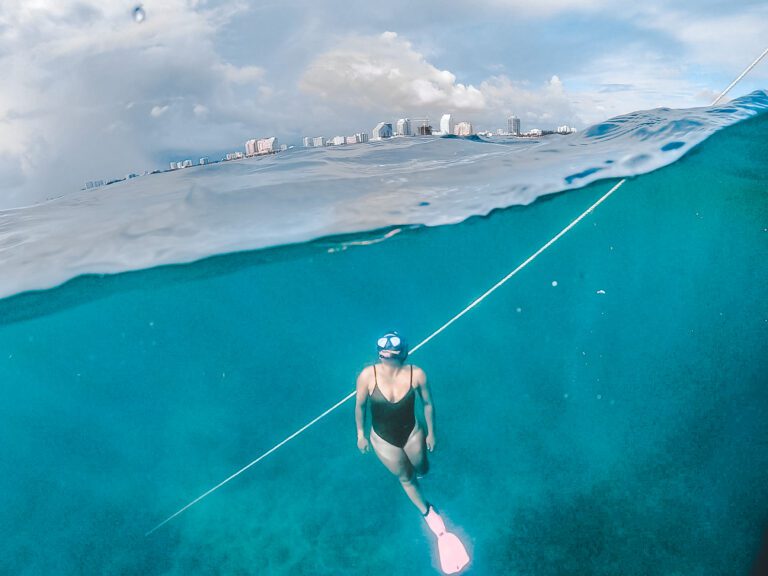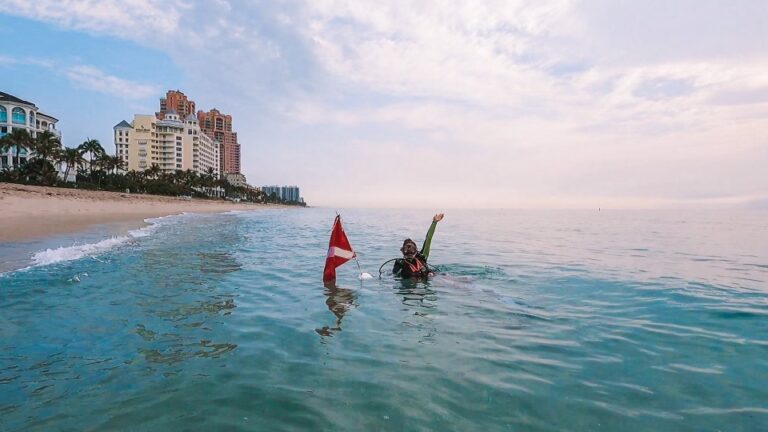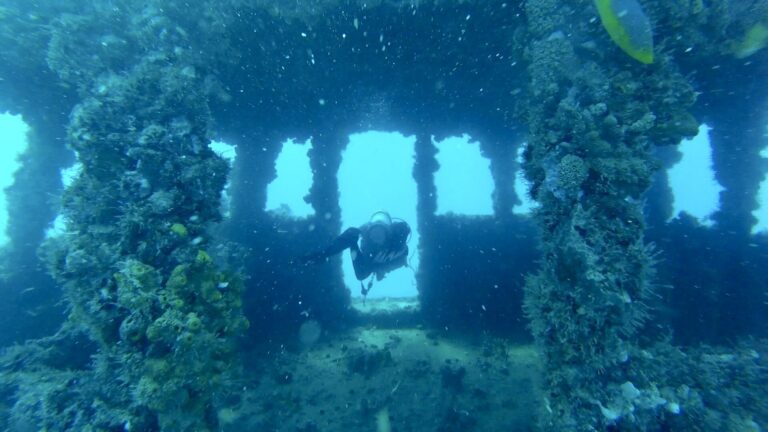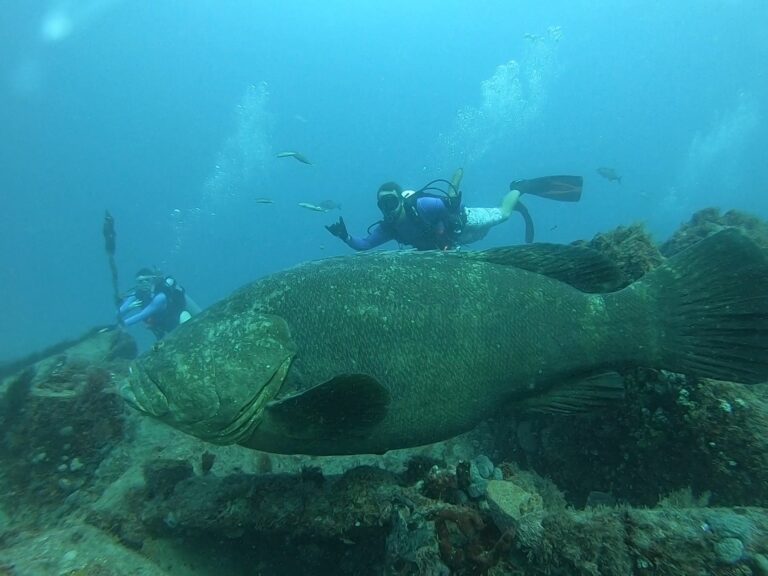Your Guide to Freediving in Fort Lauderdale Beach
The unique scenery situated steps off the beach in Fort Lauderdale make freediving here one of the most blissful experiences for ocean enthusiasts.
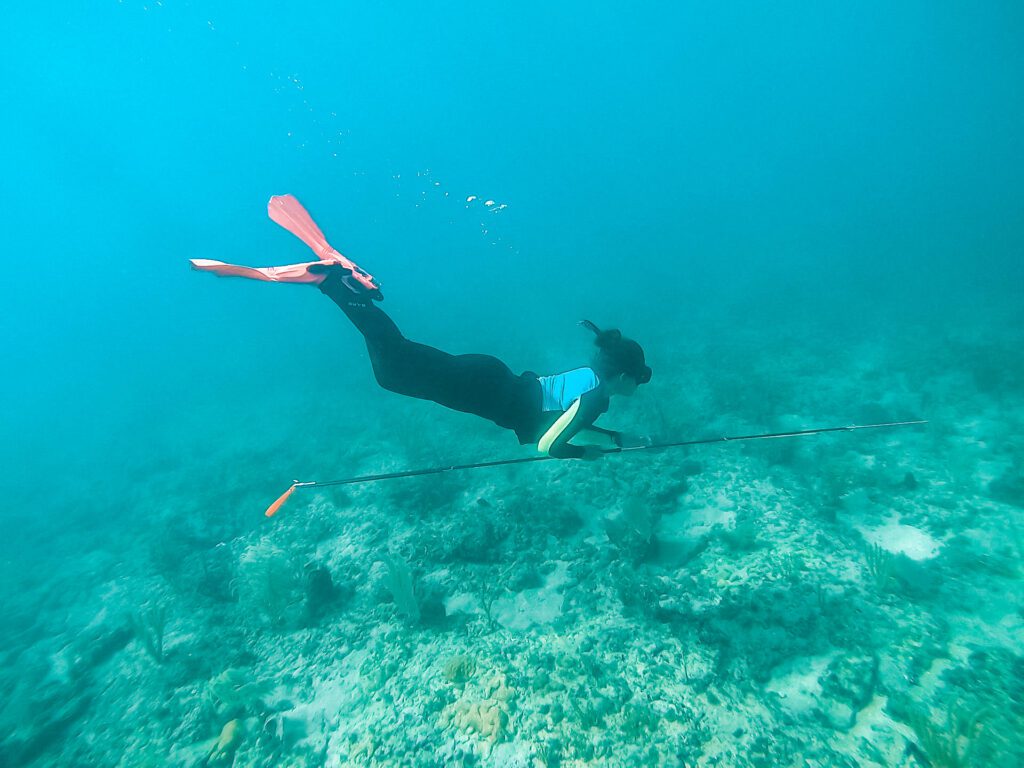
A bursting sunrise of orange, yellow, and reds gleaming over the horizon, the salty air bristling the nearby palm leaves, and an ocean so flat it looks like you could be lacing up a pair of ice skates instead of fins. Mornings like these are why we live where we live.
Amidst all the traffic, noise, and nonsense that comes with living in a major metro area, coming here reminds us of the peace and serenity the ocean has to offer us South Floridians. It’s our escape. Especially when you dive to the bottom.
We commonly find ourselves making the short drive to the beach to join other eager divers entering the water at the crack of down to see what the ocean has stirred up from the night before. Rarely does it disappoint.
That’s largely because there’s more than just sand here. Fort Lauderdale is known for its coral reefs and wrecks – all of which line the entirety of the coastline and many of which can be reached directly from shore. The city is unique like this. In fact, some parts even claim to be the shore diving capital of the USA.
And once you’ve seen it for yourself, it’s hard to argue against that claim.
For us? We have our spots and our routines. And we want to share them with you so you can join in on the fun. Below, we’ll explain everything you need to know for freediving in Fort Lauderdale. And yes, you’ll be entering the water directly from shore.
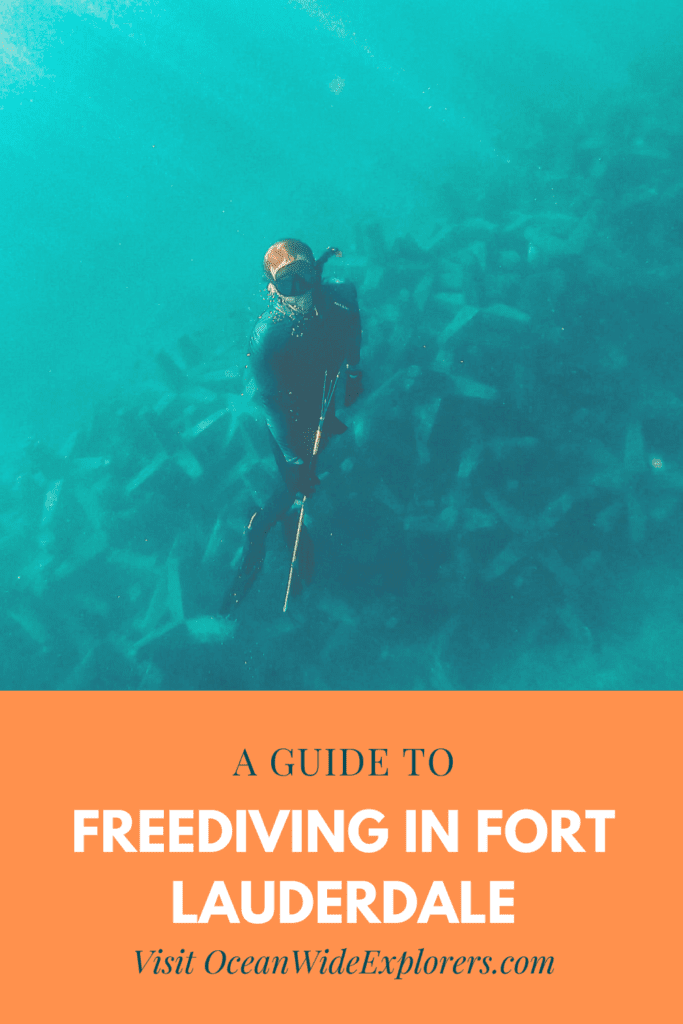
Freediving in Fort Lauderdale: Your Complete Guide
Freediving is an odd thing. It’s so simple. So natural. And so easy to do. But yet, it is wildly intimidating to get started. Especially if you want to do it right.
We certainly had those feelings. In fact, as we wade more and more into the sport, we’re still intimidated. Maybe it’s the inherent risk? The fear of the unknown? Honestly, we’re not entirely sure. All we know is how nervous we were to step foot off the beach for the first time.
That’s why we want to help calm those angsts for others. To give you a sense of guidance as you take those risks and conquer those fears. Because we’ve been there before. We hope the advice below will achieve just that.
DISCLOSURE: We took a Freediving course with FII and we think you should too. If you’re interested in becoming freediving certified, here’s what to expect during FII’s level 1 course.
Best time of day to freedive
At the beginning of this article, we made no illusions as to when the best time of day to freedive is: sunrise. Without question.
Why?
Well, a couple of reasons:
- As the saying goes, “the early bird gets the worm“.
- Attendance on the beach is sparse. Your only audience will likely be early risers trying to snap an instagram worthy profile pic.
- Many fish and ocean critters are crepuscular. Meaning, they feed at sunrise and sunset.
- Less boat traffic on the water = less jackasses running you over.
- Winds tend to be calmer in the morning which results in flat seas.
- What better way to start your day then taking a dip in the ocean!?
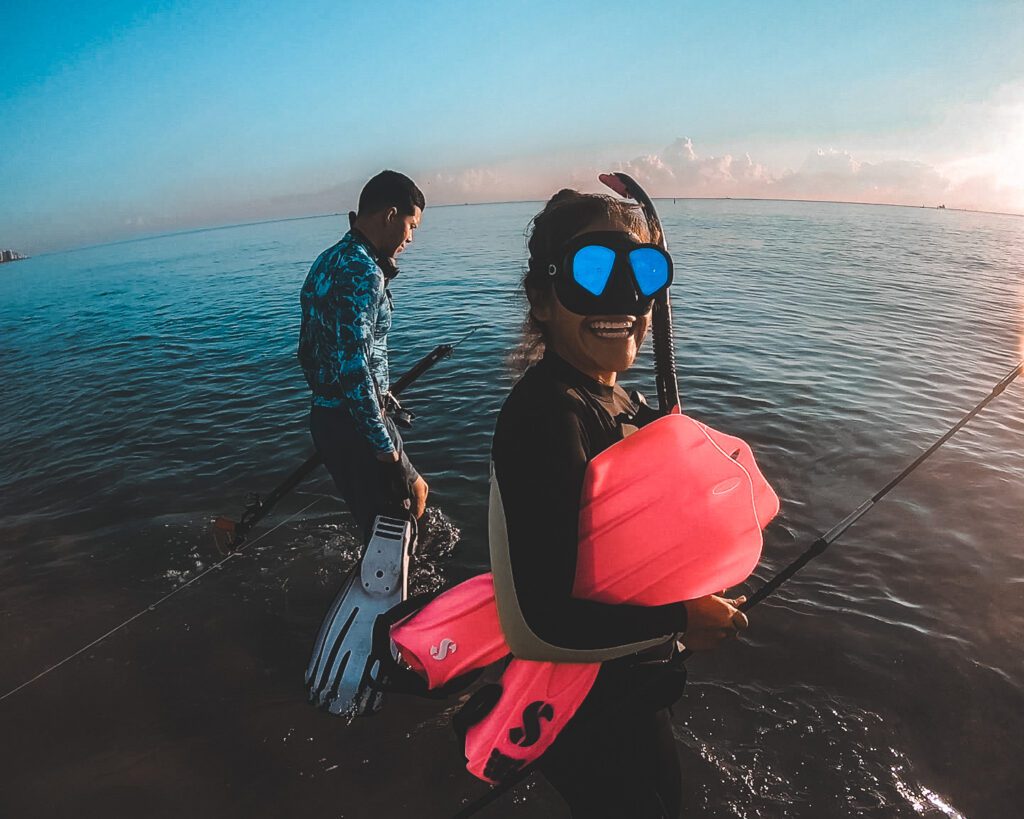
What other considerations you should take before wading in
Particularly in the realm of weather and ocean conditions, these are a few factors to consider before you enter the water:
- Tide: high tide often brings in blue water from the nearby Gulf Stream.
- Current: current can be strong in Fort Lauderdale due to its proximity to the same Gulf Stream. Strategically plan your freedive starting and ending points based on where the current will take you.
- Wind: high winds bring rough seas. Particularly if its blowing in from the east (offshore).
- Waves: again, the best indicator of wavy conditions is the wind direction and speed.
- Rain: a light drizzle never hurt anybody. But a heavy downpour quickly deteriorates visibility.
- Visibility: speak of the devil. If you can’t see the bottom, there’s no sense in trying.
- Sunshine: the sun gleaming overhead pierces through the water and enlightens life underwater – improving visibility and color.
Best sites for freediving in Fort Lauderdale
The Florida Reef Tract runs along the entirety of the greater Fort Lauderdale area and many spots get incredibly close to the beach.
However, not all dive sites are created equally. Here are few of our favorites where you’re guaranteed to see some epic views:
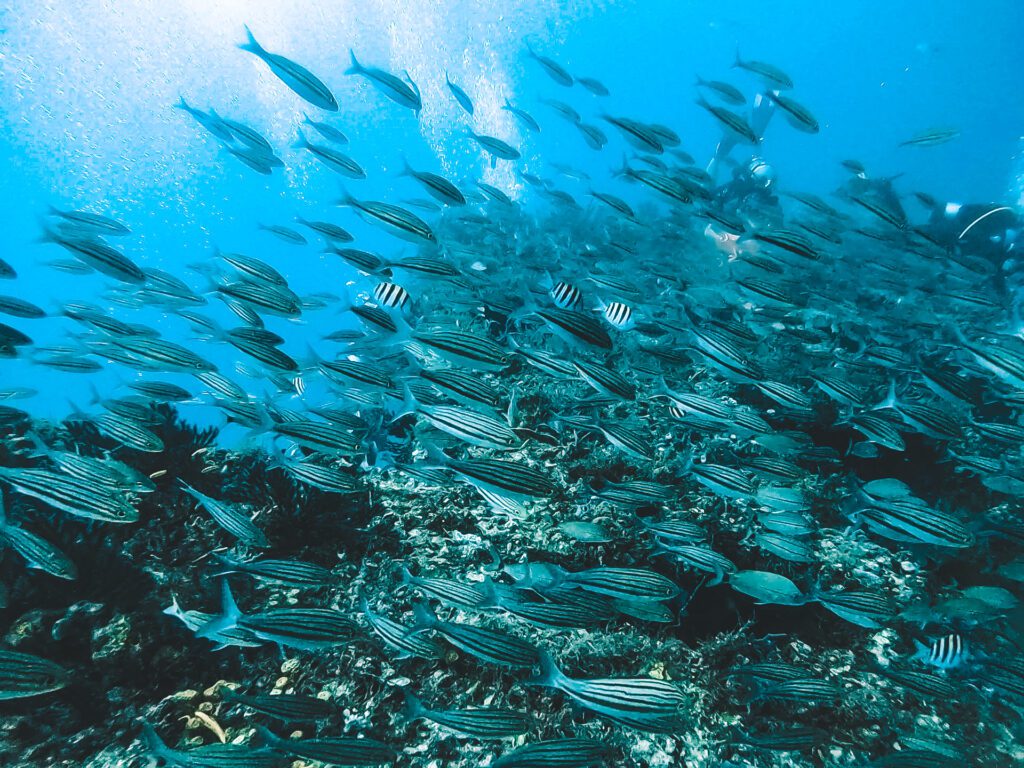
Lauderdale-by-the-Sea / Anglin’s Pier Reef
The famous beach dive is a local and visitor’s favorite – ideal for scuba diving, snorkeling, and yes, freediving. Lauderdale-by-the-Sea / Anglin’s Pier Reef is the closest to shore (300 feet) and one of the most vibrant reefs in the area.
It features what I like to call, “swiss cheese ledges” with rock structures rife with a fortress of holes, cracks, and burrows for marine life. The reef itself is only about 12 – 15 feet, although you can find deeper portions of the next reef line further east.
The only down side to this site the amount of traffic it sees daily. Don’t be surprised if you encounter multiple groups of divers. Or if you’re spearfishing, it may be slim pickings.
DIRECTIONS TO PARKING LOT: Dive zone lot just off of El Mar Drive. If that’s full, find anywhere along the street and you’ll be fine.
READ MORE: Shore Diving at Lauderdale-by-the-Sea
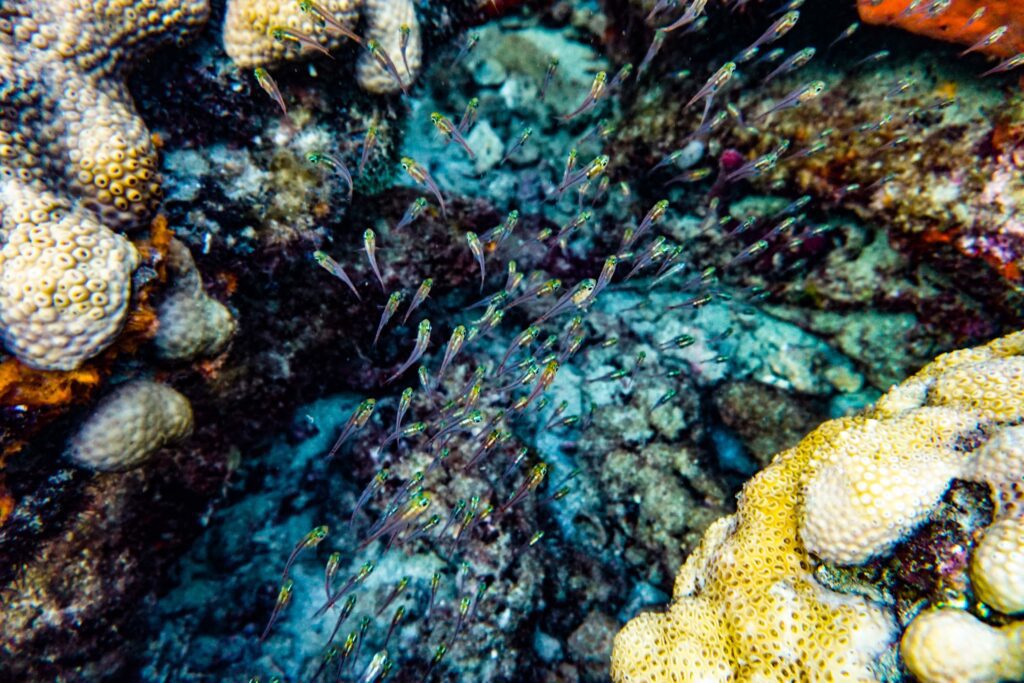
Oakland Park Reef and Vista Park Reef
A lesser known option is just a few miles down the road across the city line. At the end of Oakland Park Boulevard in Fort Lauderdale are a sequence of three city parks which give you access to two separate reefs (or one, depending on who you’re talking to).
We refer to them as Oakland Park Reef and Vista Park Reef. In our opinion, these reefs are more fruitful than their counterpart slightly north in Lauderdale-by-the-Sea. The ledges are higher, the coral heads are larger, the life more vibrant, and the human presence far less.
The only downside? It’s a much further swim out to the reefs. Approximately 600 feet, to be exact.
However, if you’re up for the challenge, it’s a far more rewarding experience with a better chance at seeing something amazing and catching something delicious.
DIRECTIONS TO PARKING LOT: You can park at one of three lots, depending on availability. All will grant you access to one of the reefs.
READ MORE: Fort Lauderdale Shore Diving: Oakland Park Reef
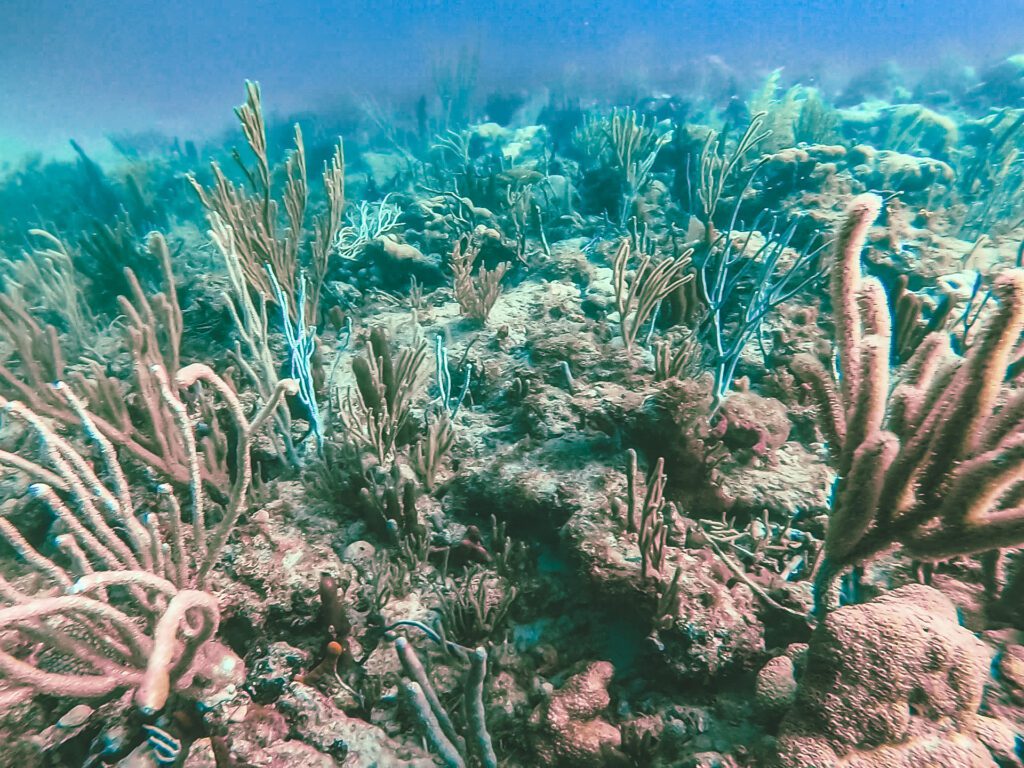
Yankee Clipper Reef, the Jax, and the Captain Jack Shipwreck
Another popular site for freediving in Fort Lauderdale is the Yankee Clipper Reef just off of Fort Lauderdale Beach Park. Aptly named for a former hotel, the Yankee Clipper, the reef will eventually lead you to a few other scenic locations hiding below the surface: the Jax and the Captain Jack Shipwreck.
NOTE: these directions are best suited for a slight northbound current or no current at all.
Park on the southern most end of the parking lot and walk south along the beach in front of the B resort and Harbor Beach Marriott hotel. Swim directly east and you’ll stumble upon a high relief ledge teeming with life approximately 500 feet from shore.
Head to the back end of the reef (seaward and east) and make your way north. After a few hundred feet, you’ll notice some odd manmade structures called the Jax jetting out seaward. Piled perpendicular to shore, follow the Jax east and look alive – this is one of the best areas to shoot your dinner.
After reaching the very end of the Jax, turn north and swim along the small ledge for 150 feet or so. Eventually, you’ll notice some rubble and twisted metal. This is the Captain Jack shipwreck – another great spot to catch your dinner.
Explore for as long as your heart desires. We ended up spending four hours out here one day and it was worth every minute.

A note on safety
- Always dive with a buddy abiding by the one up, one down mantra.
- Never dive in rough conditions or environments you’re not entirely comfortable with.
- Always use the proper safety equipment for freediving.
Required safety equipment for freediving in Fort Lauderdale
If entering the water off the beach in Fort Lauderdale, you MUST carry a dive flag with you.
Quick links for freediving gear
Check out the links below to see the latest and greatest equipment in freediving. Next to the link, we provide a quick insight on what works best for freediving and spearfishing.
Basic gear for freediving
- Mask: low volume.
- Snorkel: simple J-tube.
- Fins: long plastic or carbon fiber with a closed heel foot pocket.
- Weight Belt: rubber.
- Weights: lead weights to slide onto your belt.
- Wetsuit: open cell, thickness dependent on location. 3mm is good for South Florida.
Search for more discounts on freediving gear at the House of Scuba.
For spearfishing
- Headhunter Spearfishing
makes custom pole spears and hawaiin slings, quickly developing into one of the premier brands on the market.
- Hammerhead Spearfishing
is another top tier spearfishing brand.
- SoFlo Spearfishing is a local outfitter specializing in affordable spearfishing and freediving equipment. They’re a great place to get started.

To catch lobster
For fun
READ MORE: 7 Best GoPro Accessories for Scuba Diving (and Freediving)
Ensuring a legal catch
Know before you go. You’d hate to make a costly mistake – for your wallet’s and the environment’s sake.
- Saltwater Fishing Permit: before you enter the water, you need to purchase your saltwater fishing permit with the free reef angler add-on and lobster permit.
- Legal Species: know which fish are fair game and which are off limits.
- Size Limits: FWC imposes minimum and/or maximum size on different species. These are not suggestions, but rather exact measurements backed by hard data to ensure the longevity of the species as a whole.
- Bag Limits: the same goes for how many you can catch on a given day.
- Location: regulations are different in the Gulf vs the Atlantic. Fort Lauderdale is in the Atlantic.
- Season: make sure your catch is in-season.
NOTE: legal species, size, bag, location, and season limits are listed on the FWC’s quick chart (last updated September of 2020). Download and print to keep it handy.
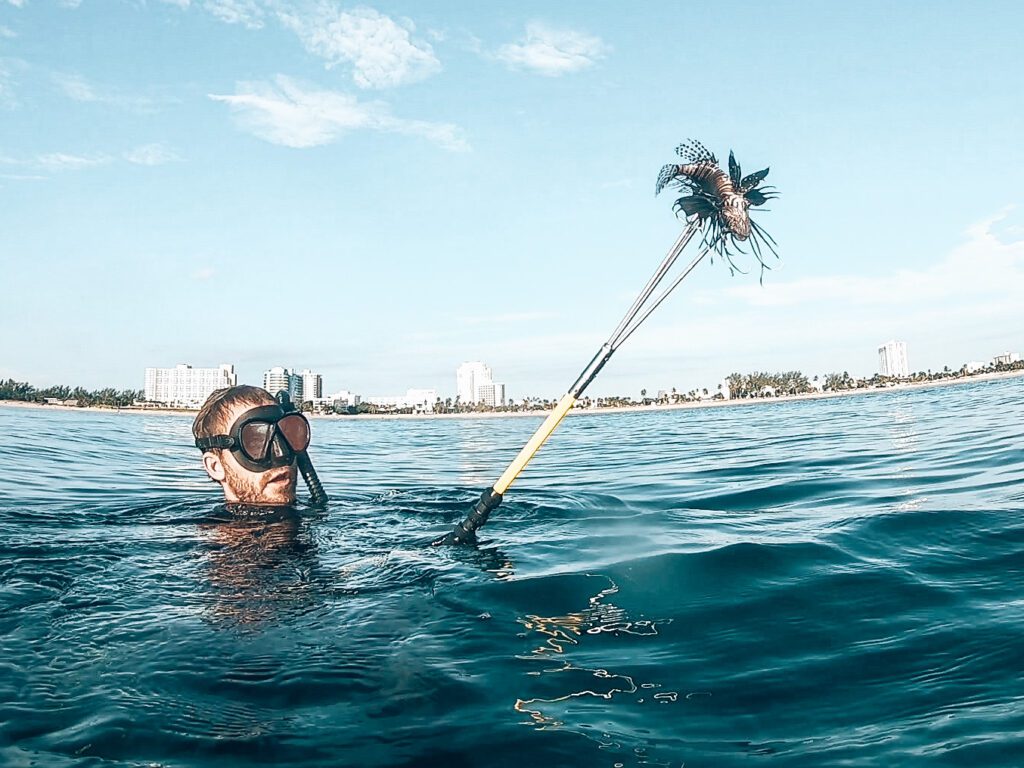
Freediving off of Fort Lauderdale Beach: Final Thoughts
Next thing you know, what seemed like a few minutes has turned into four hours. Where’d the time go?
The sun is up and the South Florida heat is baking the air. Yet the water is keeping you perfectly cool. What was once a starburst-colored sky just a few hours ago is perfectly blue now. The wind has picked up a little bit and the current seems to be rushing in. Must be the tide change.
It seems like a good moment to make it back to the beach, but yet you feel like you could stay the rest of the day. However, you’ve been splashing around all morning long and the hunger pangs are starting to kick in. Possibly a result of all the fish and lobster you’ve been catching all morning long?
These scenes are typical when freediving in Fort Lauderdale. Your mind is engaged in the moment, in touch with the natural settings around you. You’ll never want to leave. This seems right. Everything feels like it’s the way it should be.
Freediving will do this. After all, it’s only natural.
Enjoy this Post? Pin it!

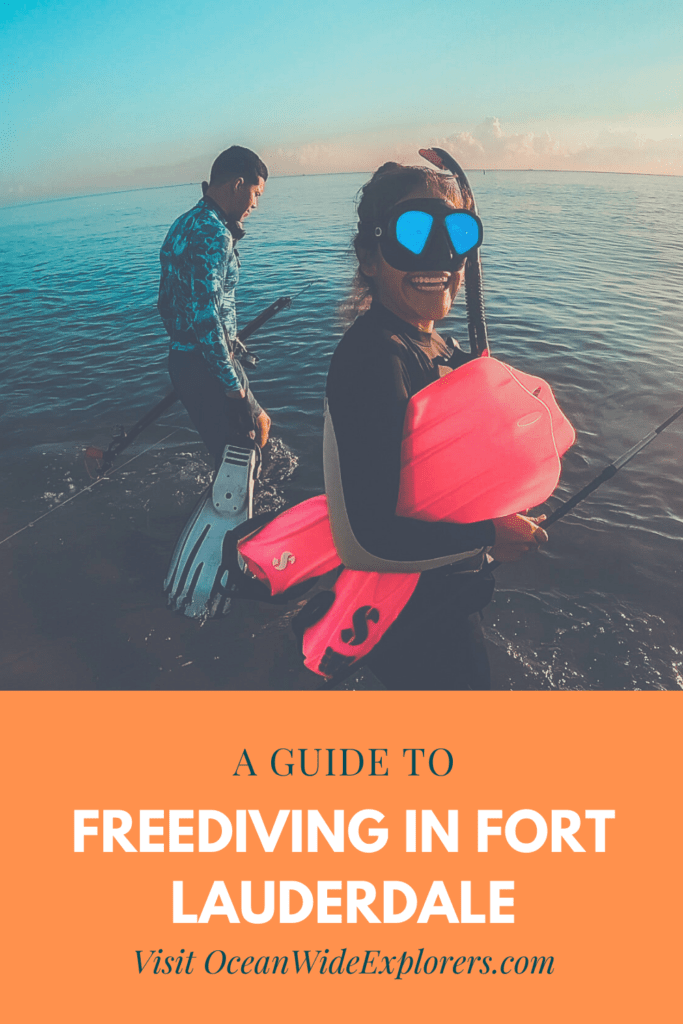
Read More About Diving in Fort Lauderdale
We hope you enjoyed our post on freediving in Fort Lauderdale. Hopefully you’ll find it useful on your next adventure! Here are a few more ocean-loving articles we think you should read next:
- 11 Reasons to Dive in Fort Lauderdale
- 10 Must-see Dive Sites in Fort Lauderdale
- 2-Day Fort Lauderdale Travel Itinerary
- Your Complete Guide to Snorkeling in South Florida
What else should we included in our guide to freediving in Fort Lauderdale? What other questions do you have? Leave a comment below and let us know!













